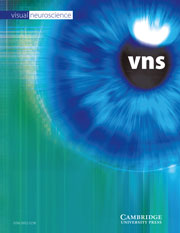Article contents
Pontine projection from striate and prestriate visual cortex in the macaque monkey: An anterograde study
Published online by Cambridge University Press: 02 June 2009
Abstract
The projection from striate and prestriate visual cortex to the pontine nuclei has been studied in the macaque monkey by means of anterograde tracer techniques in order to assess the contribution of anatomically and functionally distinct visual cortical areas to the cortico-ponto-cerebellar loop. No projection to the pons was found from central or paracentral visual-field representations of V1 (striate cortex) or prestriate visual areas V2, and V4. Small patches of terminal labeling occurred after injections of tracer into more peripheral parts of V1, V2 and V3, and into V3A. The terminal fields were located most dorsolaterally in the anterior to middle third of the pons and were quite restricted in their rostro-caudal extent. Injections of V5, however, yielded substantial terminal labeling, stretching longitudinally throughout almost the entire pons. This projection could be demonstrated to arise from parts of V5 receiving input from central visual-field representations of striate cortex, whereas parts of V4 receiving similarly central visual-field input had no detectable projection to the pons. Its distribution may overlap to a large extent with the termination of tecto-pontine fibers and with the termination of fibers from visual areas in the medial bank (area V6 or P0) and lateral bank (area LIP) of the intraparietal sulcus, as well as from frontal eye fields (FEF). It appears that the main information relayed to the cerebellum by the visual corticopontine projection is related to movement in the field of view.
Information
- Type
- Research Articles
- Information
- Copyright
- Copyright © Cambridge University Press 1990
References
- 89
- Cited by

